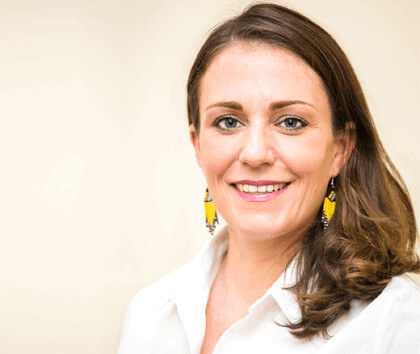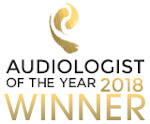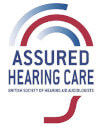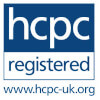The Hearing Knowledge Hub
-
Moth wings and sound absorbtion
First it was owls. Now it’s moths. It seems that, when we want to find ways to make the human world quieter, we only need look to animals. Aeroplane and engine designers put serrated edges on the back of engines and wings to make jets quieter. This emulates the serrated shape of the feathers in owls’ wings which smooth air flow, reducing turbulence and sound. Now scientists at Bristol University have found that moth wings have incredible sound-absorbing qualities, which could lead to a step change in human technologies for soundproofing buildings and transportation. The scientists have discovered that moths’ wings absorb the sounds emitted by bats, one of their main…
-
British Sign Language available for emergency services
British Sign Language (BSL) users can now communicate more easily with the emergency services following the June launch of the 999BSL video relay service. The free-to-use nationwide service can be found online at 999bsl.co.uk or downloaded as an app and enables a BSL user to connect to a BSL interpreter video call in an emergency. The interpreter then calls 999 using a landline to relay the conversation to the emergency services operator. The new service is a lifeline for people who only communicate using BSL. Now they can independently contact emergency services if they need to. The service is available 24/7, 365 days a year and there’s no need to register.…
-
New nanogel -protecting the hearing of young cancer patients
A new nano-gel, created by researchers from Curtin University in Perth, Australia, may lead to a breakthrough in the prevention of hearing loss in children receiving chemotherapy. Chemotherapy destroys cancer tissues but can also kill other healthy tissues, such as those in the inner ear, resulting in hearing loss. In fact, around half of all children who survive cancer will experience some degree of permanent hearing loss due to the toxic effects of the drugs. The Australian researchers are in the process of testing a new nano-gel they’ve developed from human bile, which, when injected into the ear, is hoped will protect children from this common side effect of chemotherapy…
-
Auracast – Tannoy announcements direct through your hearing aids
Most hearing aid users are familiar with telecoils – those built-in sound systems in theatres and lecture halls that enable you to hear sound at a distance. Well, a new technology platform called Auracast™ may be about to put the telecoil firmly in its place and change how Bluetooth hearing aids and other listening devices connect to wireless audio streams. Auracast™ enables an audio transmitter, a smartphone, laptop or public address system for example, to broadcast audio to an unlimited number of nearby Bluetooth audio receivers, including hearing aids, cochlear implants and earbuds. The idea is that, with Auracast™, you can access streamed audio without needing a hearing loop cable,…
-
Act now to reduce dementia risk
At the start of World Alzheimer’s Month we wouldn’t be doing our job if we didn’t highlight the now-confirmed link between uncorrected hearing loss in midlife, and the elevated risk of developing dementia in later life. Put simply, if you’re middle aged and you have a hearing loss but you’re not correcting it with hearing aids, then you’re putting yourself at risk of developing dementia further down the line. It’s now five years since a Lancet Commission report focused on nine risk factors for dementia, including uncorrected hearing loss. Here was confirmation that dementia had the potential to be prevented in older age by taking care of your hearing from…
-
OOPS!! You got your hearing aids wet! Tips to help
One of the hottest topics for our clients at this time of year is whether they can wear their hearing aids for a dip in the pool or sea. Our answer? Unless you have devices that are specifically marketed as being waterproof – such as the Phonak Audeo Life – it’s a resounding ‘no’! As with any electronic device, water is no friend to your hearing aids. Yes, most hearing aid models are water-resistant, but that’s very different from waterproof! You can wear water-resistant devices for a run or in light rain, but they shouldn’t be worn in the shower or when swimming, surfing, or for any other water sports.…
-
Does your child have Auditory Processing Disorder?
Supporting every child to fulfil their potential It’s the start of the school year for many schools. If your little one is starting school for the first time, or even if they’ve been at school for a few years, it’s important to be alert to any potential hearing issues they may have. Children are great at compensating for any problems, and never want to feel singled out. However, left unchecked, and any hearing or learning problems can have a serious impact on your child’s language development, confidence, social skills and performance at school. Around 5% of school age children experience auditory processing difficulties, or APD, which is a hearing problem.…
-
Genetic Testing can help save newborn hearing.
Imagine being the parent of a baby admitted to intensive care and needing antibiotics. You don’t question what antibiotics they are, or their long-term effects. However, one in 500 babies born in the UK possess a gene that can lead to permanent hearing loss if they’re given the common emergency antibiotic, Gentamicin. The first hour of a baby’s treatment in an Emergency Department is key. Up until now, any test to show a genetic vulnerability to Gentamicin took days for results to be known. By which time, antibiotics had been administered. But a new genetic test trialled by the NHS now takes less than half an hour to show if…
-
Hearing underwater
Hearing in a watery world. If you’re lucky enough to be heading off on a summer holiday this year, have a listen to what you can and can’t hear as you dive into the hotel pool and submerge yourself in a watery world. Consciously listen to the difference in sounds that you hear underwater compared to those you experience on dry land. Underwater, sounds are muffled, and it’s hard to work out where they’re coming from – left, right, back or front. That’s because, underwater, we pick up very little sound via our normal hearing pathway. Instead, sound tends to travel directly through the head. It also travels much faster…
-
Diabetes and hearing loss
Discover the diabetes-hearing loss link Today marks the start of Diabetes Awareness Week, making this the perfect time to highlight the link between hearing loss and diabetes. Did you know that hearing loss is twice as common in adults with diabetes compared to those who don’t have the disease? While the cause of hearing loss here isn’t fully known, it’s widely thought that nerve damage is to blame. The prolonged high blood glucose levels associated with diabetes may affect the supply of blood or oxygen to the nerves and blood vessels of the inner ear, in much the same way as diabetes damages blood vessels and nerves in other parts…












